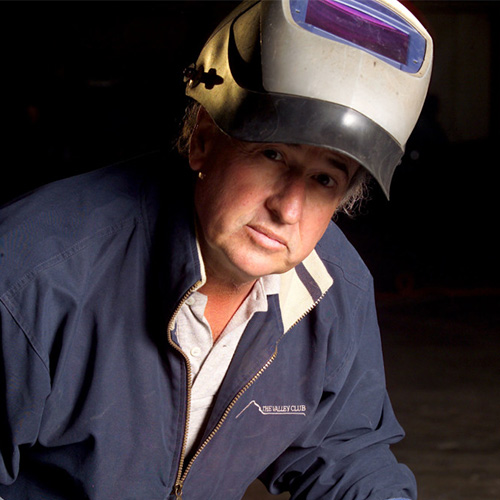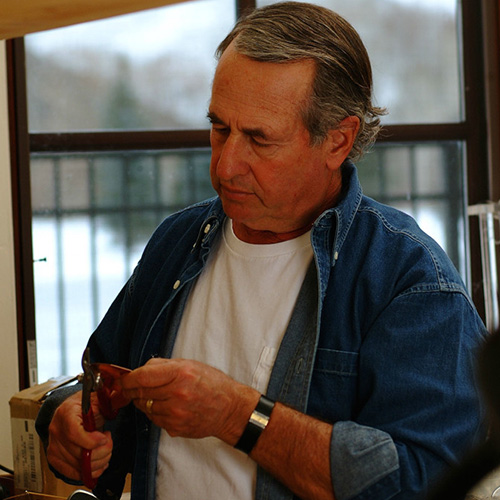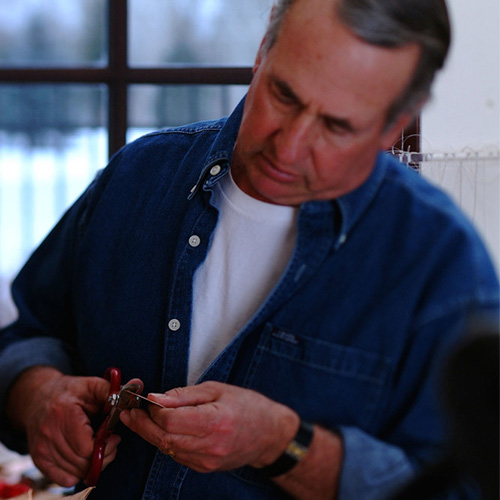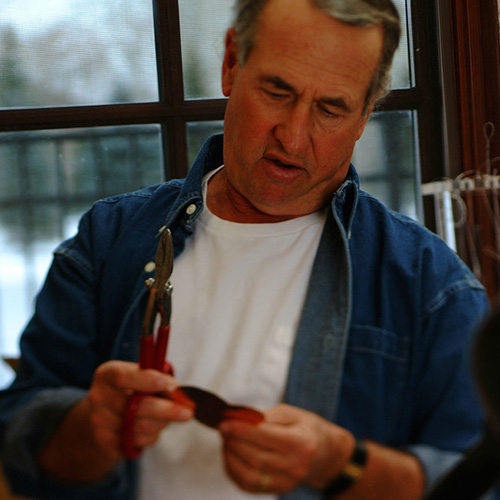



ARTIST STATEMENT
“Making the impossible, possible; the possible, probable; and the probable a reality; finding optimism out of pessimism, believing in egalitarianism; and living the impossible dream define my art.”
My mission to spread optimism trough my art — that the “impossible dream” can be lived and experienced, defies those who would deny the world an opportunity to exist in balance and harmony. Any ability I might have to communicate this and other ideas and emotion through my art is a gift for which I am eternally grateful. I am compelled to share that gift with those who would gain some positive element from their contact with my art.
It is a source of great joy when I experience someone laughing upon viewing a photograph of my Bed in the Park, or when there are tears in the eyes of people who are feeling the hope of my Hope series.
It is my privilege to convert mostly metallic materials into art objects in which the intrinsic nature of cold metal is converted into art forms that communicate the warmth of my optimism and humor (sometimes so subtle as to require a willingness by the observer to participate), or the glow that comes from participating in a balanced life.
When I become possessed by a theme, such as the power of life in my Hope series, it becomes my mission to share my emotional convictions — creating what my mind dictates and my skills allow.
It is my privilege to convert mostly metallic materials into art objects in which the intrinsic nature of cold metal is converted into art forms that communicate the warmth of my optimism and humor (sometimes so subtle as to require a willingness by the observer to participate), or the glow that comes from participating in a balanced life.
When I become possessed by a theme, such as the power of life in my Hope series, it becomes my mission to share my emotional convictions — creating what my mind dictates and my skills allow. I rarely set out to create for any purpose, but rather, my sculpture is created only when the inspiration wells up from its unknown source. As long as that source exists, I will create sculpture.
MOBILES
While the obvious egalitarian statements of balancing a universe exist in my mobiles, my underlying missions in creating them are much more complex.
Alexander Calder entered my life in the early 1960’s and there he stayed as my mentor and major influence whom I credit with spuring my venture to create art. Jean-Paul Sartre wrote of Calder’s mobiles that they were, “…neither wholly alive nor wholly mechanical…mobiles do not seek to imitate anything because they do not seek any end whatever, unless it be to create scales and chords of hitherto unknown movements- they are…lyrical inventions, technical combinations of an almost mathematical quality and sensitive symbols of nature…” I did not seek to imitate Calder’s work, but rather to participate in a beautiful process of creating joyful and beautiful objects that floated through space leaving the observer with a sense of merry wonderment.
My first mobile was created out of scraps of copper, wire and brass spread out on my bed in 1964. A significant influence for that creation came from Miguel de Cervantes Saavedra (often simply called Cervantes), with whom I shared a deep conviction that the “impossible dream” could be lived and experienced. It is interesting to me that none of my mobiles needed planning or engineering (except for safety factors), but rather they grow from a creative process that seems to reside in my soul. That first mobile has a primitive figure of Don Quixote moving in a perpetual quest. My art, my life. The forms of the clouds and windmills in “Don Quixote” were created from a source unknown, but when completed, filled the space as if intended.
My compulsion to create mobiles, rekindled in 1999 after a 35-year vacation, is driven in part by my desire to share the joy and beauty of shapes and colors as they move in a balanced dance through space. Many shapes that already exist in art and nature seem to influence my hand as it cuts sheets of copper into the parts that will become a new sculpture. At times I am single focused on a particular shape, for example hearts, and all of the new pieces are variations. Other times I seem to create from my memory of other artists whose work have shapes that influence my creations (primarily Matisse and Miro). It is definitely my mission to continue to create mobiles, perhaps to find new forms of painting and maybe glass that will, by floating as a balanced mobile in the wind, create some positive energy that can better the world in which we live.
And then there are my quixotic dreams that must find artistic creations to communicate my optimistic views. It is not that I am unaffected by the grim realities of the savage behavior of men and women or of the constant battles between the forces of good and evil. These realities are made prominent not only in our daily news but also throughout art and history, from the Bible to Star Wars. But to me there is always a possibility, no probability, that hope does not “spring eternal” in vain. When I feel that optimistic feelings can be conveyed through my medium of sculpture, it is my mission to create that sculpture. Sometime this takes the form of a serious image, sometimes whimsical. Regardless, when my mind and imagination are creating images, I merely become their servant with orders to find a way of executing their creations.
ABOUT ROBERT A. KANTOR
Robert Kantor was born in 1943 and grew up mostly in Dallas, Texas. He graduated from the University of Colorado where he studied art history and English literature. He was a graduate fellow at New York University in 1964 when he was immersed in the work of Alexander Calder as well as the other “modern masters”. It was during this period that he first began making mobile sculptures, the most well known being “Don Quixote” which was completed in 1965. By 1966 sculpting was taking a back seat to law school, marriage, family and work. Robert distinguished himself in law school graduating in the top ten and going on to be appointed as the law clerk to a prominent U.S. Court of Appeals Judge in San Francisco. In San Francisco his involvements in the arts expanded. During this period Robert began a more intense study of art, frequenting classes at the San Francisco Art Institute which was one block from their home. He continued to create small art pieces, but only for his family. The Kantors moved to Sun Valley Idaho in 1989 with their three boys. It was in Sun Valley that Robert began to spend time with local and visiting artists, culminating with an increase in his own artistic endeavors. Mobiles began to grow out of his garage workshop. When the Kantors started to design and build a new home in the late 90s, his compulsion to create works of art began to play a significant role. His first non-mobile piece (Creation) was fabricated in 1999. “Creation” was 11 feet tall and involved 10,000 pounds of welded steel that was painted red. In order to pursue his passion for his art, Robert opened a welding shop in Shoshone Idaho where he and his primary welder, Mary Garrett, began to create. Then came a flood of work, so much that when Dennis Ochi (Ochi Gallery) discovered the prolific and impressive nature of Robert’s efforts, he offered to represent Robert and presented Robert’s work in a one-man show in November of 2002. (Catalogues of the show were printed featuring more than 25 works) This was the first time the public had ever seen art created by Robert Kantor. As a result of the show several works have been installed in buildings and homes in the Sun Valley area. Collectors in Chicago and Denver acquired other pieces. One art piece is being prepared for presentation in the Napa Valley area in a sculpture garden and another in a clinic building in the same area. Robert Kantor is represented by the I. Wolk Gallery in St. Helena, California and by the Ochi Gallery in Ketchum, Idaho.